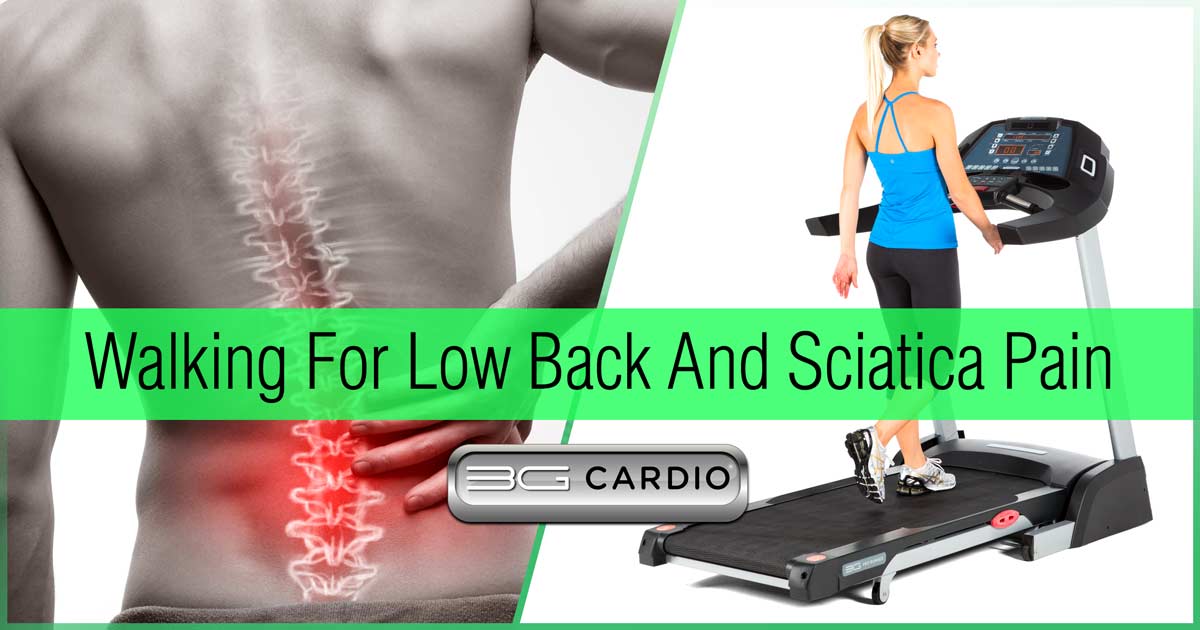
14 Nov Is Walking Good For Low Back And Sciatica Pain?
For people who have suffered with low back pain, it can often be troubling and confusing to figure out how to feel healthy again.
On one side, there are experts who tell you to be active in order to loosen up your back. On the other side, exercising can sometimes hurt and even make you feel worse off.
So what’s a person to do?
According to Spine-Health.com, walking on a treadmill or outside can help alleviate sciatic pain by reducing inflammation and triggering the release of endorphins.
It’s really important to note that a person should make sure to have good walking form, especially if battling back or sciatica problems.
Here are four tips to help your back and sciatica pain:
1. SHORTEN YOR STRIDE
Take shorter steps to protect your lumbar discs. Instead of taking long strides that can lead to compressing your lumbar discs and aggravate your sciatic nerve, relax your walking style.
Spine-Health.com gives these pointers: “Don’t reach with your toes. Land between your midfoot and heel, then gently roll onto your toes and push off into the next stride. This will naturally shorten your strides because it’s difficult to roll your foot when it’s far from your body.”
Slow down a little from your normal pace, which will naturally shorten your steps a bit.
2. ENGAGE YOUR CORE MUSCLES
Make a conscious decision to hold your abdominal muscles tight. This will minimize pressure on your spine and protect your sciatic nerve roots.
Spine-Health.com offers these tips for good walking posture: “Stand upright. Keep your head and shoulders tall and focus on a spot in the distance. Suck in your stomach. Pull your stomach slightly toward your body for the duration of your walk. Take deep breaths and keep a comfortable pace, otherwise you’ll find it challenging to engage your abdominal muscles for your entire walk.”
3. LEVEL OFF
If you normally follow a running or weight training regimen and suffer back pain, walking is a good alternative to turn to in some instances.
Use walking as a gentle way to allow the body to re-cooperate for several weeks after a sciatic flare-up. Make sure to walk on level surfaces with a limited or zero incline. A treadmill is a great way to bounce back from back pain because you control the speed and incline.
Slow down immediately if you experience pain and if it doesn’t go away within a minute then stop.
If you have recently experienced an acute sciatic flare-up, refrain from all exercise and try to maintain normal activity only.
4. GETTING UNSTUCK
Low back and sciatica pain can be extremely tough to deal with. Livestrong.com offers these tips to try to reduce your pain and start moving better again:
“Use moist heat for 15 minutes at a time, several times per day, on your buttocks or lower back to reduce your pain. Stretch your sciatic nerve by lying face down on the ground with your affected leg bent up to bring your knee to your chest and your unaffected leg extended behind you. Provide a trigger point release to your buttocks any time you are experiencing sciatic pain by lying on a tennis ball placed underneath the most painful area of your buttocks and trying to relax your buttocks in this position for about five minutes.”
I’ve used these tips myself and they have been very effective. Once you start feeling better, hop on the treadmill and try to walk.
Full Comparison ChartThe best advice is listen to what your body is telling you and don’t try to do too much. If pain persists, seek treatment from a medical professional.
NOTE: Consult a doctor or certified fitness trainer before starting any new workout program to determine if it’s right for your needs. This is especially true if you (or your family) have a history of high blood pressure or heart disease. If you experience faintness, dizziness, pain or shortness of breath at any time while exercising you should stop immediately.










Sorry, the comment form is closed at this time.